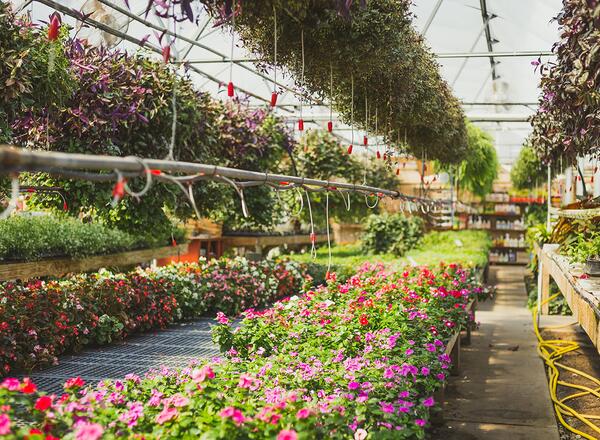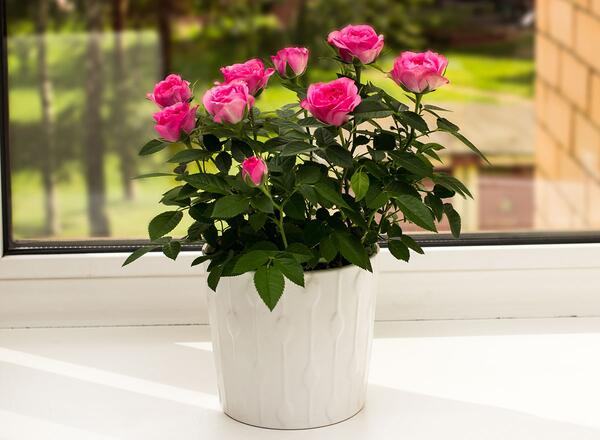Picking out a rose plant may sound easy, but gardeners are often faced with many options such as bare-root, containerized, grafted, own-root, and various grades. All of these options may play a part in the decision-making process of selecting roses for the garden. Of prime importance is selecting varieties that will fit into a garden based upon size of the garden, local growing conditions, and varieties that the grower likes and feels will fit into his plan.

Rose plants can be purchased locally through garden centers and other retail outlets or by mail. Keep in mind that local outlets can offer the gardener flexibility but may not have a wide selection; mail order tends to offer a wide selection but the flexibility as to when plants need to be purchased is limited. Plants bought locally are sold either bare-root or potted. Mail order plants are almost always sold bare-root. Which is better? When ordered or bought from a reputable dealer, both are good, and it's just a matter of preference. Many older roses are only available bare root through specialty mail order nurseries.
Bare-root roses are dormant plants that are sold to the gardener with no soil around the roots; instead, they have moist packing material such as peat or wood shavings around the roots. Bare-root plants are sold in garden centers as "packaged" plants. Packaged as well as mail order roses may also have their canes covered with wax. This helps prevent drying while in storage or in the retail store. The wax doesn't need to be removed. It will eventually degrade and break away from the canes.
Canes on bare-root plants should be plump and green with smooth, unshriveled bark. They should also feel heavy. A dried-out plant will feel light, and the twigs will be brittle. Bare-root plants should be ordered with instructions to ship them when planting is suitable for your area. If bare-root packaged roses are bought locally, try to select them as soon as possible after the shipment is received at the store. Stores generally hold packaged plants in warm areas that cause them to break dormancy, producing premature, weak growth that can devitalize the plant. If bare-root roses can't be planted immediately, they may be held up to two weeks in an area that is cool (40°F). Keep the canes and roots moist during this time by covering them with moist material such as peat moss or wood shavings.
If plants need to be held longer than 2 weeks, it is a good idea to heel them in outdoors. This is done by laying the plants in a shallow trench and covering the roots with soil. The canes may also be covered if drying is a concern.

Garden centers can offer both containerized and potted roses. Containerized plants are bought as bare-root plants by the nurserymen, placed in containers, and sold as growing plants that same season. The root development may not be very extensive with these plants and so extra care may be needed when transplanting to the garden. Some potted plants may have been grown at the nursery for a longer time resulting in a very extensive root system. The extensive root system holds the soil ball together resulting in an easier job of transplanting without the problem of the soil ball falling apart. Due to economics, one is not likely to find many of these plants for sale unless they were overwintered from the previous season. Containerized plants can be planted any time during the growing season with spring or early season planting preferred for northern growing areas. Fall planting of roses can be done, but may need extra winter protection and the earlier plants are planted, the better. Bare-root roses can be shipped and planted only in the spring while they are dormant.
In Zone 6 it is suggested to mound plants with soil before they go into the winter. Also, selecting varieties that are not too tender will also help. In Zone 5 and colder you often see the words proceed with great caution. The severity of the winter demands some form of winter protection for all except the old, very hardy varieties. Plant as early as possible to achieve some rooting. For this reason October may be better than November. Winter protection is advisable.

Roses are propagated commercially in one of two ways. The most common method is to take a bud from a desired cultivar and graft it onto a species rose rootstock. Rootstocks used are often Rosa multiflora, Rosa canna, or Rosa laxa. These are selected because of their ability to produce vigorous root systems. The place where the cultivar and rootstock are joined becomes distinctively swollen. This is referred to as the bud union or "nob." All canes of the cultivar come from the bud union.
From a gardener's point of view, this produces a rose that tends to have a better root system. From a nurseryman's point of view, budding results in plants that reach the market quicker. Less time is spent in the production fields.
There are several pitfalls to be aware of with budded roses. Rootstocks of budded roses often send up suckers that produce leaves and flowers that are totally different from the budded cultivar. Suckers are also a common result when budded roses are killed to the ground during severe winters. That is why some roses mysteriously change identities between seasons, producing long, thin canes with different leaves and different flowers. Other problems that can occur are graft incompatibility, resulting in reduced vigor and death, as well as the transmission of rose mosaic, a virus infection that reduces the rose's performance. Budding is often the only option in commercial production since not all roses can be successfully rooted or produce a very poor root system on their own. Budding may also be the only way to maintain a specific cultivar.
The other method of propagation is softwood cuttings, producing roses offered as own-root roses. Many of the old garden roses are offered as own-root roses and provide distinct advantages, especially for northern gardeners. With own-root roses, the problem of off-type suckers disappears because all shoots coming from the base of the plant are identical to the cultivar that you purchased. Plants grown on their own roots also tend to be longer-lived. Also, since the root system is genetically identical to the canes, one is assured that the new basal canes produced each year are true to the cultivar. This is especially important where severe winters often kill roses to the ground. Own-root roses may be slow-growing initially and may be smaller in size and less robust, but they soon develop into very durable plants.
Many roses, both modern and old garden roses, are now offered as either budded or own-root roses. Suppliers should be able to tell the gardener what type of plants they offer. Some nurseries even offer custom budding or rooting services for some very difficult-to-find roses.